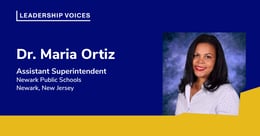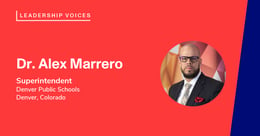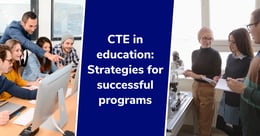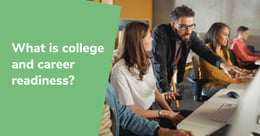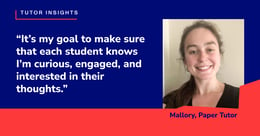
College and career readiness activities for your students (Clone)
When a student has the confidence it takes to pursue their dreams, you know you’re on the right track as a teacher. But when they develop a clear sense of what their dreams are and how to achieve them, that’s when you know you’ve succeeded.
We’ve compiled several college and career readiness activities you can use to help students discover where their passions might lead them and what they need to do to get there. Take a look.
[READ: “What is college and career readiness?: Pointers for educators”]
Career exploration opportunities and career pathways
Supplying students with the knowledge it takes to follow their dreams requires that teachers promote two concepts that are separate, yet related:
- Career exploration and awareness, so learners can discover what kinds of opportunities they might be most interested in. Youth.gov, a government resource for youth programs, points out that career exploration and skill development can include mentoring, self-assessments, and more.
- An understanding of career pathways, so students can figure out what steps they need to take to secure a job in their chosen field, including completing specific college coursework, earning a professional degree, or finishing a technical education program.
Crucially, covering these topics gives students greater choice and agency over their lives, and it helps them connect their lessons today with where they see themselves in the future.
Learners don’t necessarily have to decide on their dream jobs from day one. After all, lots of adults will change careers multiple times. For many individuals, this fact underscores the importance of soft skills and the value of a well-rounded educational experience. Nevertheless, gaining exposure to specific career opportunities and pathways early on—and regularly revisiting them—can be an inspiring experience for learners of all backgrounds.
College and career readiness activities for high schoolers
Secondary education is a pivotal period in a student’s educational journey, and college and career readiness have to be at the forefront during these years. As early as 10th grade, learners might take the PSAT, and even classes and extracurriculars taken in ninth grade can influence students’ next steps.
Teach students about dual-enrollment programs and other school and community connections
Your school may have options for students to participate in dual-enrollment programs at local universities and community colleges or to participate in opportunities to work and train with community partners. For example, Dr. Maria Ortiz of Newark Public Schools shared several examples of such opportunities, as did Dr. Shari L. Camhi and Anthony Mignella of the Baldwin Union Free School District.
Teachers can provide additional exposure to these worthwhile experiences by highlighting them in special sessions for their students and inviting program leaders and participants to come in and share with the class.
Cultivate a college-going culture
When students feel that higher education is built into their environment, they’ll be better equipped to envision themselves in a college or university setting. There are many steps that teachers and administrators can take to create a college-going culture, as the National Association of Secondary School Principals points out, from wearing college gear on designated days to hanging posters and pennants in classrooms and hallways throughout the school.
Build career exploration into the curriculum
Today, there’s a wide variety of tools available online to help students learn more about in-demand careers and how these jobs might map to their personal interests. For example, My Next Move from O*NET can help students access a treasure trove of data about possible career options. Users can search by career keyword, browse by industry, or complete an interest assessment. As they explore careers, they’ll find salary information, education requirements, and more.
Teachers can build resources like this into their lesson plans to help learners get a handle on which careers they might be interested in and how to prepare for them.
College and career readiness activities for elementary and middle school students
In an article from The Hechinger Report about career readiness in elementary and middle school, the author highlighted a broad range of initiatives that schools are deploying to help their students explore career interests at a younger age, particularly through a STEM lens. Strategies profiled in the story include:
- Building connections between core subjects and fabrication labs for interdisciplinary project-based learning exercises that encourage students to use new technologies.
- Incorporating elements of other disciplines—like history and environmental sciences—into classes focused on career-oriented topics, such as STEM and robotics.
- Giving learners the opportunity to develop adaptable and resilient soft skills by sharpening their problem-solving skills and collaborating with peers.
- Developing lessons that help students explore financial literacy relative to possible career pursuits, educational outcomes, lifestyle choices, and personal budgets.
- Helping students explore multiple career clusters with an open mind so they don’t feel funneled into a rigidly bound track but rather free to explore a broad range of possibilities.
- Promoting college preparation alongside career exploration for all students.
A common theme among these activities is to make career possibilities—and the important role higher education plays in many professional pursuits—tangible for students at an earlier age.
Support in early childhood for college and career readiness
According to the Partnership for 21st Century Learning, 21st-century skills—including critical thinking, collaboration, communication, creativity, technology literacy, and social-emotional development—can be integrated into early childhood education to help children gain the abilities they need not only for school but for life. The organization’s 21st Century Learning for Early Learning Framework explores how teachers working in early childhood through kindergarten settings can create a conducive environment for the development of lifelong learning skills by:
- Providing clear guidance, expectations, and explanations about the learning environment while remaining flexible to accommodate learners’ curiosities.
- Encouraging children to explore different perspectives in an environment that values diversity.
- Showcasing work completed in class and encouraging learners to reflect on how they completed various tasks.
Additional support systems for college and career readiness
College and career readiness opportunities don’t stop at the classroom door. To help students get the most out of the tools that are available to them, teachers can devise activities that promote connections to additional supports available within the school environment.
Collaborate with school counselors
Many districts are working to improve student-to-counselor ratios. In an article about the recent rise in school counseling positions, EdSurge noted that these new staff members often take a whole-child approach to their work.
Finding new ways to work together with school counselors, particularly as their ranks are growing, can be an effective way for teachers to help ensure their students have college and career readiness support that’s holistic in nature.
Tap into after-school programming
After-school programs can help bolster college and career readiness by providing students with access to engaging activities related to a broad range of fascinating subjects and important life skills. In districts that partner with Paper™, learners can log in to PaperLive, where they’ll find shows that focus on STEM, financial literacy, and much more.
Make use of an effective Educational Support System (ESS)
In addition to PaperLive, Paper’s ESS also includes a Review Center where students can gain valuable feedback on their college application essays, résumés, and more.
Looking for more information about how to help students prepare for postsecondary success? Check out our latest ebook, “5 ways student-centered interventions can increase engagement.”

.png?width=260&height=136&name=Blog-Tutor-Insights-Kenna%20(1).png)
